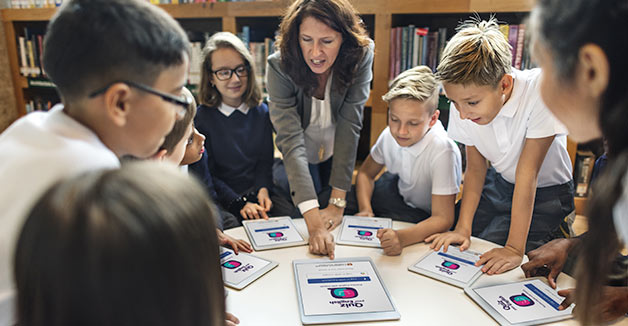Delivering Learning
Feel confident using digital tools and resources, and create a positive environment for learning with digital tools and resources. Empower your learners in their use of technology for learning.

Setting up digital tools and resources in a face-to-face learning environment
Using digital tools and resources can change how learners work with you, and each other, as well as how learners react to their learning environment. Setting up digital tools and resources well can have a positive impact on the way that learners work. It is important that you can overcome technical problems to ensure that learning activities are successful – as well as being aware that technology can excite, distract or even annoy learners if not used effectively.
Learn how to create and maintain a positive learning environment where everyone is on task with simple strategies such as grouping learners, arranging seating and monitoring learning to ensure successful learning with technology.
Setting up and managing digital tools and resources in a digital learning environment
To operate in a digital learning environment, learners need to be able to access learning content easily, know what path to follow and get technical support. How easy or difficult it is to do these things can affect learners’ mood and behaviour, and their ability to learn when they’re doing self-study online or attending live virtual lessons (e.g. Skype lesson or webinar).
Create an environment that promotes and inspires independent learning by selecting appropriate tasks for learners, sending reminders to motivate them to complete tasks, and dealing quickly with any technical problems.
Preparing students for using digital tools and resources
To engage with and complete digital activities, learners need to know how to use hardware such as tablets and computers, and the applications you have chosen to use, such as wordprocessing tools, voice-recording software, etc. Clear and effective instructions and demonstrations are essential and helping learners to understand why they are using a digital tool or resource can improve their motivation and outcomes. This is especially important if learners are using digital tools and resources for independent study.
Take time to plan your instructions and demonstrations, and learn how to use digital tools and resources to help you prepare learners to use technology effectively for learning.
Responding to learners
Effective feedback is a vital aspect of learning. Digital tools and resources offer many opportunities for feedback, including ways of focusing on error correction. Tools such as Word, Google Docs and voice-recording software can be very helpful for giving personalised feedback to learners, and learners can also use these tools to give peer feedback.
Take the opportunity to reflect on how you give feedback to learners and what they would find most useful. Learn how to exploit simple tools to help learners engage with the feedback you give and to provide personalised feedback to help learners improve.
Communication and interaction online
Effective online communication can strengthen connections between learners and with you, extending the learning environment and opportunities for collaborative learning beyond the walls of the classroom. You can use a range of tools to support synchronous communication such as webinar platforms, and asynchronous communication such as forums and social media. Roles and acceptable behaviours can be different online, and it’s important to monitor and facilitate interaction and check that learners are participating and on task.
Develop your online communication skills to maintain and facilitate positive interaction with and between learners.
